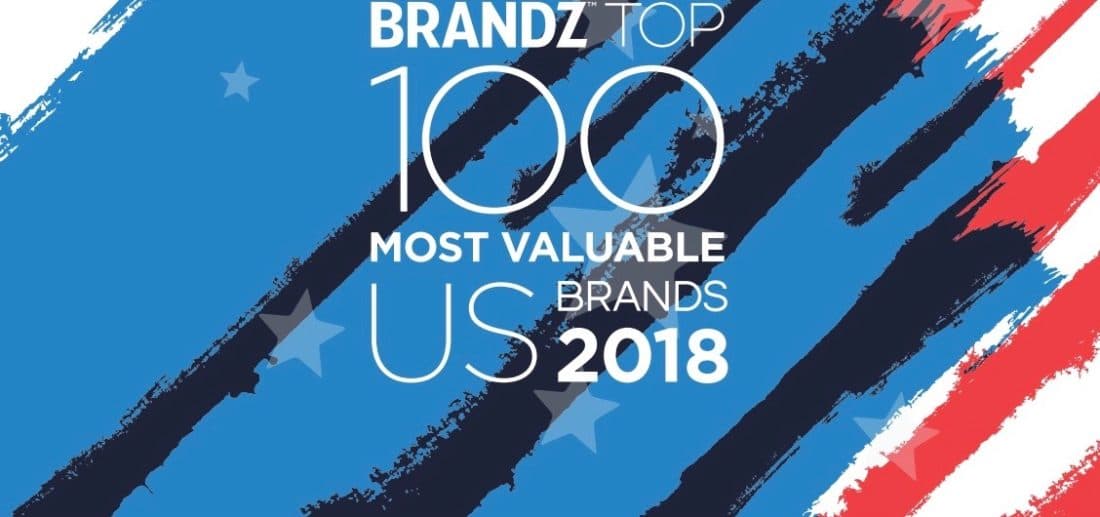A strong brand’s contribution to a company’s success—and its stock price—just keeps growing in importance, and it is forcing businesses to approach their operations and invest in new ways, according to a new study ranking the top brands in the U.S.
Companies are becoming less focused on making products and more on building their brands, creating communities around their brand purpose and user experience, said the industry insiders at the launch of the new BrandZ Top 100 Most Valuable U.S. Brands study. WPP Group and Kantar Millward Brown released the report, an offshoot of its annual Top 100 global brands study, at an event in New York.
“Investing in a brand is a superior investment,” said David Roth, CEO of The Store, EMEA and Asia, WPP’s global retail practice.
In spite of a “phenomenal speed of change” one factor has been consistent: Brands deliver shareholder value, said Roth. The value of companies in the global top 100 brands has exploded—today’s Top 10 are worth as much as all 100 were a decade ago—yet every year, their stocks outperform all other indices. After more than a decade, the BrandZ study has empirical proof of the importance of brand value, said Roth.
“As marketers and brandbuilders we should feel very confident,” said Doreen Wang, global head of BrandZ.
It is the first time the U.S. brands have been singled out in the 12 years the BrandZ report has been carried out. Wang noted that 51 of the world’s top 100 brands are U.S.-born, so there is significant overlap with the global trends.
Strong brands have a strong purpose at the heart of the organization, are seen as innovative by consumers, focus on brand experience and try to build brand love among its consumers, noted Wang.
“No matter how innovative you are, you have slowdown times,” said Wang. “(Brand) love gives you that cushion until the next innovation happens.”
Brands should go “asset-light” and focus on owning brand and sales process to focus on delivering a great brand experience, rather than on manufacturing. “It demands great flexibility from our brands,” said Caplan. As an example, he noted that top brands such as Apple and Tesla focus on designing and marketing their products and subcontract the manufacturing to others.
Many companies are evolving into platforms to deliver experiences to consumers, said speakers. The paradigm has changed for U.S. companies that used to depend on shelf space and media to reach consumers, said Adam Caplan, partner at marketing consultants Kantar Vermeer. In the digital age, anyone can get their product in the customers’ hands, so marketers have to be very customer-centric to keep them, he said.
Leaders have to continue innovating to meet changing consumer needs, said Caplan. For example, he noted that Amazon—the third most valuable brand in the survey—began as a bookseller.
“Your customers are cheating on you. They’re trying different brands,” he said. He added marketers need to know the customer and deliver better than competitors.
“This is the trick. This is the sustainable business model… measure, understand them, deliver, remeasure and continue delivering,” said Caplan.
“You have to move or the world will go right past you,” said Jodi Harris, VP consumer strategy and insights at brewer AB/Inbev. “I challenge my team to never stop learning. Go out there. You have an itch, go scratch it.”
Kevin Peck, VP global branding, strategy, design and brand management at AT&T agreed that keeping the brand relevant over the years can involve reinventing its purpose repeatedly. In nearly 200 years, AT&T has bad to go from being a telephony provider to a telecomm to a technology company: “The challenge is: how do we make the brand relevant again and again and again?”
While U.S. brands usually dominate the global ranks, a new stage of globalization is developing, where local markets are rediscovering their own products, said Roth. The BrandZ study is seeing a shift from “the Coca-Colas of this world that established America as a brand” to domestic names challenging the global brands in local markets, he said.
Additionally, emerging brands are disrupting the environment by following a different playbook, noted Victoria Sakal, senior consultant at Kantar Vermeer. Companies such as Ancestry.com, LegalZoom and Peloton have purpose built into their operational model; it gives them a reason to exist, she said. Ancestry, for example, changed from a records company to repositioned itself as a journey of discovery, she said.
Storytelling is transforming how people relate to the business, said Vineet Mehra, CMO of Ancestry. Focusing on how its services connected people gives them a feeling of belonging, he said: “People are skeptical of deep data and technology but the notion of connectedness is universal and will live forever.”
